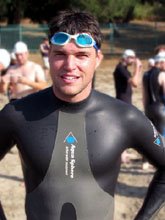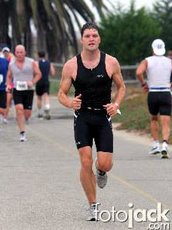Well, I’ve taken myself a nice long break from the world of blogging, and it’s time I got myself back in the saddle. No excuse, really, except holiday sluggishness.
What finally got me going again was an email from my colleague Alan Aragon, a nutritionist and dietician whose seminar I attended (and discussed here) about a year ago. I don’t know Alan that well, but I really liked his angle on things: he never takes studies or trends or whoop-di-do ideas at face value. Whenever some new gem pops up in the fitness world—particularly as it pertains to diet—Aragon will crank it through the meat-grinder of his own perceptive and freakishly well-informed mind and come up with the straight skinny for those of us more credulous types without a thousand letters after our names and the patience and wherewithal to sort the dross from the genuinely substantial.
A skeptic among the faithful is a valuable commodity: what good would the first STAR WARS movies have been without Han Solo, the wisecracker in the background undermining every starry-eyed platitude about The Force that Mark Hamill takes in with such puppyish enthusiasm. When Solo starts to believe—even a little bit—at the end of the first movie, we start to think, hey, maybe Obi-Wan was onto something.
And do we ever need our skeptics in the fitness world. If the responses to my CrossFit post from a few weeks ago tells me nothing else, it’s that for many people, a fitness program is tantamount to a religion (T.C. Luoma has an ever-profane take on this same topic here). My swipes at Intelligent Design and my comments about presidential candidates didn’t meet with anything near the deluge of protest I received when I opined that every single person in the known universe may not have all their fitness needs and dreams and desires entirely satisfied by CrossFit. With a tip of the hat to Ray Kybartas, for many—hey, maybe for ME—fitness is a religion.
Without the Alan Aragons out there to check and challenge us (and there are others out there, too!), we fitness types would be a bunch of snake-oil charletons, getting by on a shoeshine and a smile.
So it was great to hear from him. The email in question included a sample of his newest project: a monthly newsletter called the ALAN ARAGON RESEARCH REVIEW. From this first issue, I gather Alan’s intention is to sum up the latest studies in the science rags and lay journals and pretty much sort it all out for us: the AARR will tell us which studies make sense, which ones don’t, which ones are laughably biased or fatally flawed, and the few-and-far-between that represent real innovation.
Much of this information would be available to anyone inclined to pore through all of it, it’s just that so few of us ARE. I’ve been a member of the NSCA for a couple of years now, and one of the big perks is receiving a huge tome of studies on diet and exercise methodologies every month. I always tear into my latest issue of the JOURNAL OF STRENGTH AND CONDITIONING with gusto, only to glaze over after reading a handful of abstracts. Sure, the folks at NSCA are doing valuable work, and for heaven’s sake, they should go on with it. But for the most part, they’re the theoretical physicists, toiling away at the outer reaches of this field, coming up with theories that are well beyond the pale of usage for average gym-goers like you and me.
Some of the studies offer definitive proof in the roundness of the world, the existence of gravity, or the greenness of grass. Others modify common knowledge so slightly and tentatively that the results are almost meaningless. But ever so often, I’ll come across a study or two that sees to be saying something really groundbreaking, but I’m just so unscientifically inclined that it’s sometimes tough to be sure that I’m reading what I think I’m reading.
Now, there are plenty of lay resources out there, too, which are clearly written and easy to understand, but there you have the opposite problem: whereas science journals offer tons of substance with precious little application (“Effects of Post-Exercise L-Glutamine Supplementation on Amino Acid Uptake in Hypoglycemic College Pole-Vaulters”); many lay resources offer tons of application of questionable substance (“Lose 25 Pounds of Flab in Eight Days!”).
So what’s to do? Stuck between reams of impenetrable science on one side and glossy pages of empty promises on the other, the average fitness Joe might feel inclined to throw up his hands and settle in for an afternoon of Captain Kangaroo and bon-bons. But Alan’s RESEARCH REVIEW pulls it all together. He’ll tell you if a study on the benefits of Snickers bars was sponsored by Hershey, or if the article about the dangers of soy was underwritten by the National Council for the Advancement of Carnivorism. Want to know what’s new, what’s hip and most importantly, what’s EFFECTIVE in the fitness world? Check it out. Alan’s one of the good guys.
Subscribe to:
Post Comments (Atom)




1 comment:
It's good to have you back :)
Post a Comment